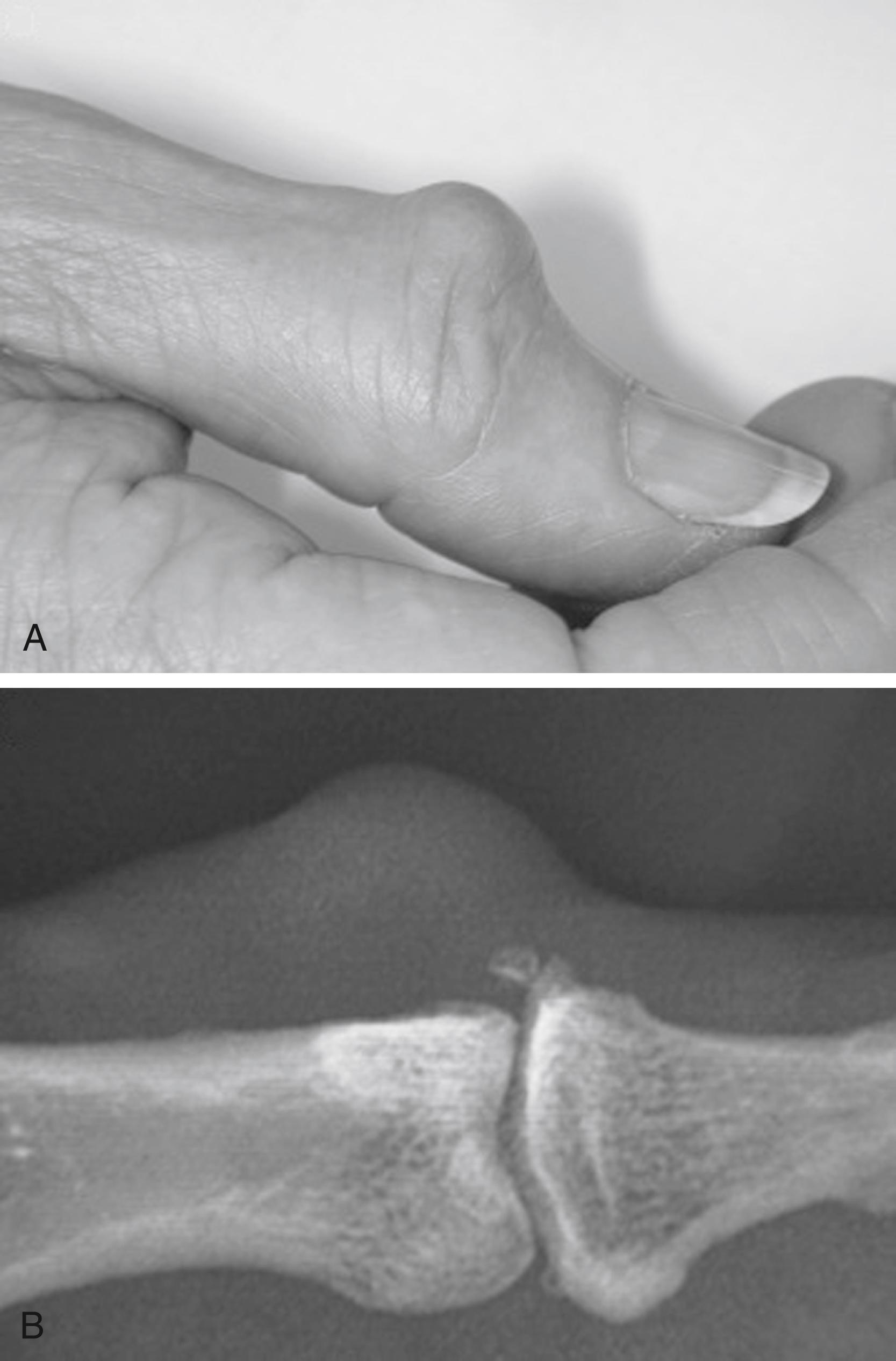Physical Address
304 North Cardinal St.
Dorchester Center, MA 02124
Mucous cysts are a common form of ganglion cysts that occur most commonly the dorsal surface of the fingers ( Fig. 103.1 ). Occasionally, mucous cysts can occur on the lateral or palmar surface of the finger. Mucous cysts are usually solitary, but multiple cysts can occur ( Fig. 103.2 ). The cysts have a translucent or bluish milky appearance and are most commonly seen in patients suffering from osteoarthritis of the fingers. Arising from the distal interphalangeal joint, these painless cysts often cause patient anxiety because of their cosmetic appearance, especially when enlarging cysts compromise the germinal matrix of the nail. Without treatment, this compromise of the eponychial tissues can result in ridging of affected nail and longitudinal grooving ( Figs. 103.3 and 103.4 ). Over time, if the mucous cyst is not treated, the skin overlying the cyst will thin and will be subject to injury from minor trauma ( Fig. 103.5 ). This may result in spontaneous drainage of the cyst, but given the thick mucous contents of the cyst, such drainage is often incomplete, resulting in a chronically draining sinus ( Fig. 103.6 ). Because of the attenuated skin overlying a mucous cyst, the patient will often attempt to drain the cyst by puncturing the cyst with an unsterile needle. This is not only usually ineffective, but it often results in infection. Plain radiographs, ultrasound, and magnetic resonance imaging of the affected finger may help delineate the extent of the cyst, clarify the involvement of the nail matrix, and aid in the identification of other pathology responsible for the patient’s symptomatology ( Figs. 103.7, 103.8, and 103.9 ).









Become a Clinical Tree membership for Full access and enjoy Unlimited articles
If you are a member. Log in here